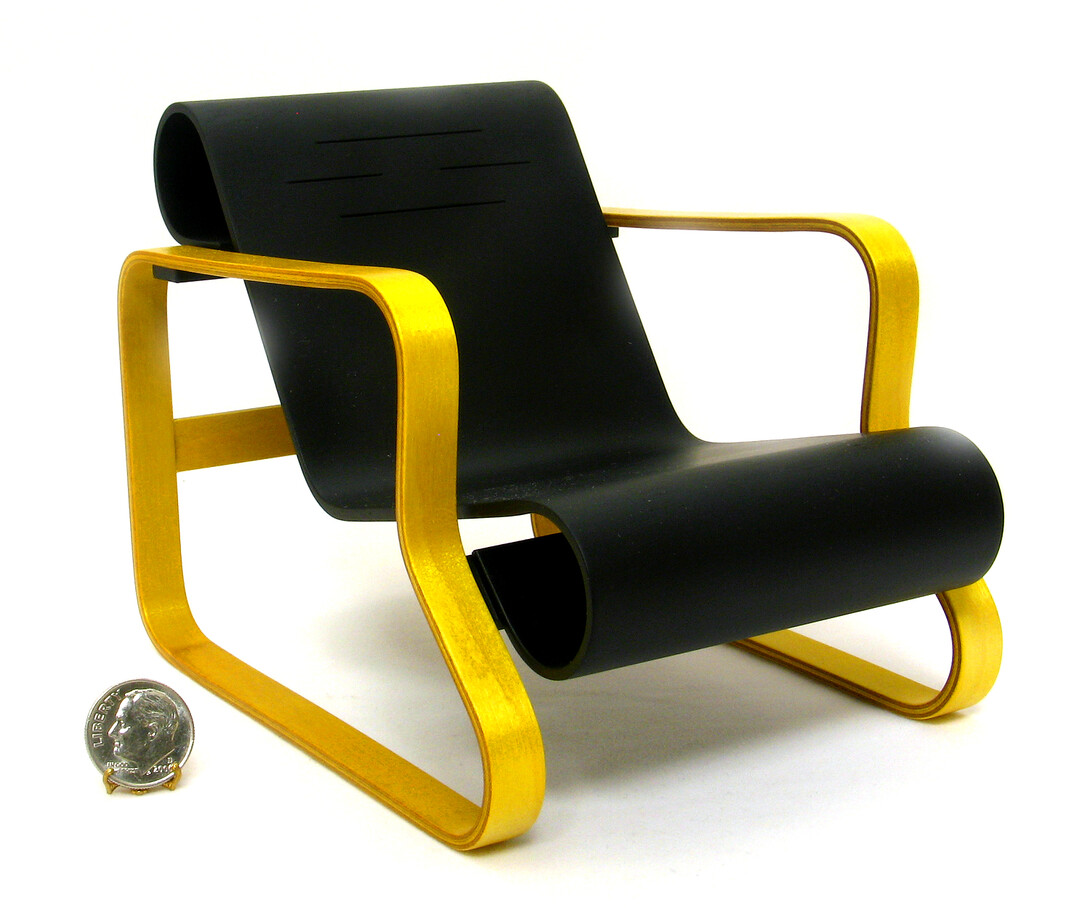
The Kruger Collection in the College of Architecture will present a new exhibition, “Diminutive Design: Modern Miniatures from the Vitra Design Museum,” opening today (April 5).
The exhibit features miniature replicas of modern furniture by significant designers of the 20th century. The licensed miniatures are made in Germany by the Vitra Design Museum, an institution that specializes in documenting the history of design. Important objects by Charles and Ray Eames, Henry Bertoia, George Nelson and others are represented in the exhibition.
Each miniature sits within a setting designed at the College of Architecture, including work by the winners of the third-year interior design studio competition, “The Residential Environment.” Following the competition objective, students analyzed the attributes of one Vitra miniature, along with the exterior of the Sheldon Museum, designed by architect Philip Johnson. Using this analysis, they created a miniature piece of outdoor furniture and for use within a specific site in the Sheldon Museum Sculpture Garden.
One competition winner, Erica Frederiksen of Audubon, Iowa, designed an installation, “Tulip Chair Reinvented.” Frederiksen created a model bench which was inspired and informed by three existing features: Eero Saarinen’s Tulip Chair, the geometric forms of the Sheldon Art Museum, and the bridge overlooking the Sheldon’s sculpture garden. The two other competition winners are Allison Placzek of Wichita, Kan., and Sara Wolfe of Lincoln.
The exhibition is free and open to the public and runs through March 21, 2014.
Located in Weil am Rhien, Germany, the Vitra Design Museum collection contains objects documenting the history of industrial furniture design and lighting. In the 1990s the museum began making miniatures of collection chairs significant to furniture design, representing design achievements from the Industrial Revolution to present day. Measuring one-sixth the size of the original, the miniatures replicate the original object in all details. Each miniature corresponds to the original in construction, material and color, with careful consideration to the intention of the original designer.
After measuring the original full-size chair, model makers spend months researching and perfecting methods to scale down the piece. The final product is made by hand in small batches, with the aid of specialized machines.
The Kruger Collection contains 20,000 fine-scale miniature furnishings representing English and American design styles from the 1600s to the 1980s. The majority of the miniatures were hand-made by professional miniature makers in the 20th century. Lincoln resident Eloise Kruger collected the bulk of the miniatures that make up the collection. Her collection was donated, intact, to the College of Architecture in 1997. For more information, go to http://krugercollection.unl.edu.
— DiAnna Hemsath, Kruger Collection







